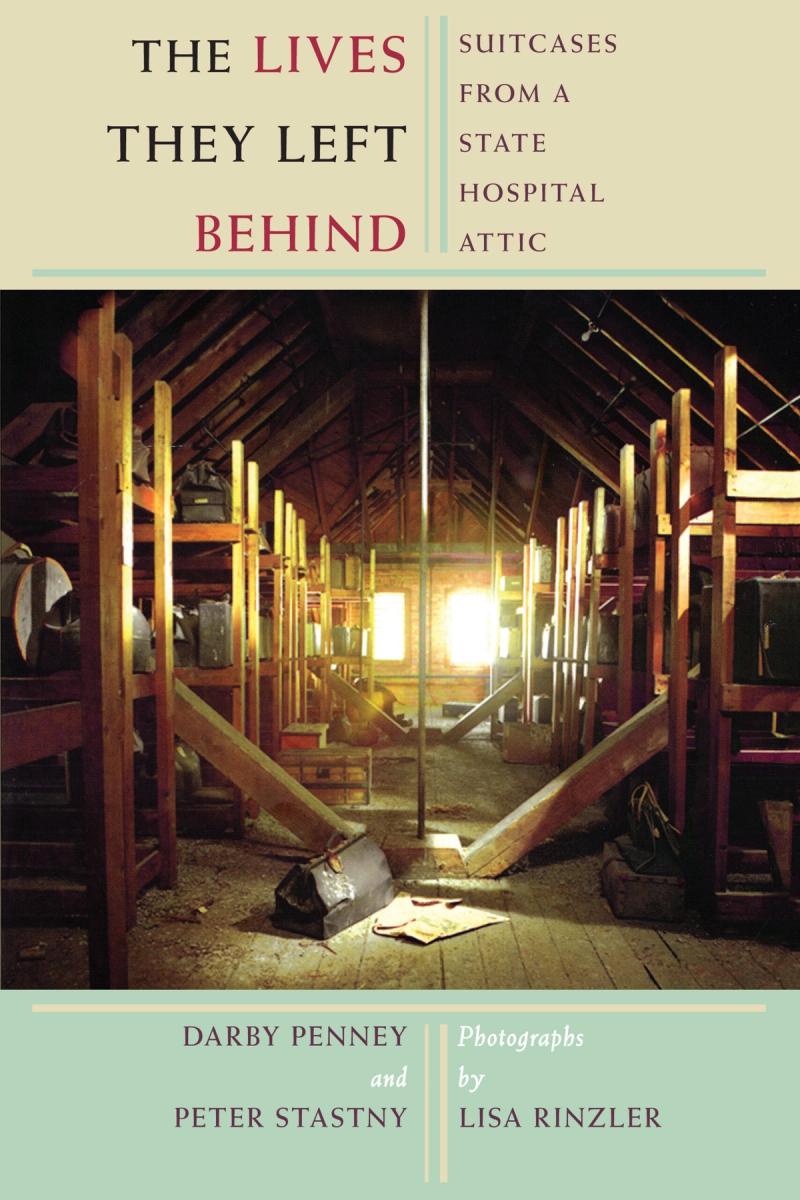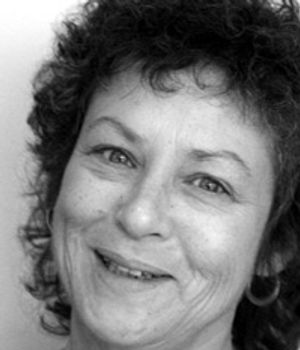The Lives They Left Behind is a deeply moving testament to the human side of mental illness, and of the narrow margin which so often separates the sane from the mad. It is a remarkable portrait, too, of the life of a psychiatric asylum—the sort of community in which, for better and for worse, hundreds of thousands of people lived out their lives. Darby Penney and Peter Stastny’s careful historical (almost archaeological) and biographical reconstructions give us unique insight into these lives which would otherwise be lost and, indeed, unimaginable to the rest of us.
— Oliver Sacks
The Lives They Left Behind
Suitcases from a State Hospital Attic
Willard State Psychiatric Hospital, overlooking Seneca Lake in rural upstate New York, housed more than 54,000 people during its 126 years of operation. Some were released to their communities after decades of institutionalization, but many more died there. If not for the discovery of 400 suitcases filled with patients’ belongings in the hospital attic when the facility closed in 1995, their lives would have been lost to history. This discovery led the authors—a psychiatrist and an ex-patient advocate—to conduct a detailed study of the lives of the suitcase owners, to curate an exhibit at the New York State Museum in Albany that attracted more than 300,000 visitors, to speak to audiences across the country about the lives of the suitcase owners, and to write this book.
In The Lives They Left Behind, the contents of ten of these suitcases are skillfully examined and compared to the written record to create a moving and devastating group portrait of twentieth-century American psychiatric care. Richer, more complex lives than indicated by the hospital records emerge from a wide array of personal effects, including letters to loved ones, photographs of school chums and foreign travels, knickknacks, religious tracts, a christening gown, professional photographic equipment, and a delicate hand-painted bone china teacup and saucer. Here are gripping personal dramas of new immigrants and native-born Americans, men and women of different races and ethnicities, among them a young, dispossessed German nun, a Scottish nurse, a Filipino student, and an African-American World War II veteran. These people coped with a host of problems in times of war, economic hardship, and cultural dislocation. The confusion following displacement, the rage or despair resulting from illness, loss of loved ones, or sudden poverty, and the experience of hearing disembodied voices were only some of the misfortunes that put them on the path to institutionalization, from which most did not escape alive.
As it restores the humanity of the individuals it so poignantly evokes, The Lives They Left Behind reveals the vast historical inadequacies of a psychiatric system that has yet to heal itself.

Ebook
- ISBN
- 9781934137239
Paperback
- ISBN
- 9781934137147
The Lives They Left Behind gave rise to a successful campaign to commemorate patients who had been buried in unmarked graves on the grounds of the Willard State Psychiatric Hospital. Find a multimedia presentation about this campaign and the lives it has touched in the New York Times.
Darby Penney (December 10, 1952 – October 11, 2021) was a national leader in the human rights movement for people with psychiatric histories and co-author of The Lives They Left Behind: Suitcases from a State Hospital Attic.
visit author page »Peter Stastny is a psychiatrist and documentary filmmaker who has advocated for radical changes in the mental health system and worked on several transformative demonstration projects in New York and around the world. He has collaborated with Darby Penney and other experts-by-experience on spreading self-help and empowerment programs, spearheaded the employment of ex-patients in alternative services, and is a founder of the International Network for Alternatives and Recovery (INTAR). Peter was on the faculty of the Albert Einstein College of Medicine and Columbia University and continues to teach and work in New York City.
visit author page »Praise for The Lives They Left Behind
[The authors] spent 10 years piecing together a handful of poignant biographical narratives, tracking down medical records, talking to former staff and using artifacts from the suitcases as clues to the lives these patients lived before they were nightmarishly stripped of their identities.
No reader will walk away untouched by these compelling portraits.
— Ronald Bassman, Ph.D., author of A Fight to Be: A Psychologist’s Experience from Both Sides of the Locked Door
An important and profoundly moving story. . . . The exquisite details we learn about the patients’ lives—the color of lace on a dress, a plea to a bishop, the photo of a wife who died—convey the particulars of their humanness, their strengths, and their tragedies, and a chapter revealing sad and frightening parallels between long-ago and current treatment of many people called mentally ill should shock us all into action.
— Paula J. Caplan, Ph.D., author of They Say You’re Crazy: How the World’s Most Powerful Psychiatrists Decide Who’s Normal
Darby Penney and Peter Stastny have . . . performed an important service, reclaiming these individuals from the nameless, faceless fate of being only ‘mental patients.’
— Judi Chamberlin, author of On Our Own: Patient Controlled Alternatives to the Mental Health System
As we have yet to provide a full measure of support and treatment to men and women diagnosed with mental illnesses, The Lives They Left Behind offers a sobering reminder of past tragic errors, lest, in our search for new therapies, we lose sight of what should matter most: our sense of common humanity.
— Drew Days III, Alfred M. Rankin Professor of Law at Yale Law School, former Solicitor General in the Clinton Administration and Assistant Attorney General for Civil Rights in the Carter Administration
In unpacking the prior lives stored in these suitcases, Darby Penney and Peter Stastny turn remembrance into an act of alchemy.
— Kim Hopper, Ph.D., author of Reckoning with Homelessness
A unique and mesmerizing evocation of lives erased . . . at once unnerving, heartbreaking, and a bitter testament to an era in psychiatric history whose legacy is all too present today.
— Gail A. Hornstein, Ph.D., author of To Redeem One Person Is to Redeem the World: The Life of Frieda Fromm-Reichmann
The Lives They Left Behind is a tour de force, a must-read for anyone concerned with social justice, human rights and historical reclamation. Darby Penney and Peter Stastny brilliantly rescue ten people who spent time at Willard State Hospital from certain historical anonymity and silence by giving them voice to speak for themselves. Their riveting accounts invite us to explore the turmoil and strengths of their inner terrain while mourning the erosion of hope after years of captivity and inhumane treatment in the name ‘help’ and under the guise of ‘best interest.’ The Lives They Left Behind is more than a testament to the past, it is a wake up call to our collective conscience, to uphold the spirit and dignity of all human beings.
— Laura Prescott, President and Founder, Sister Witness International Inc.
A stunning achievement.
— Robert Whitaker, author of Mad in America (from the Foreword)


